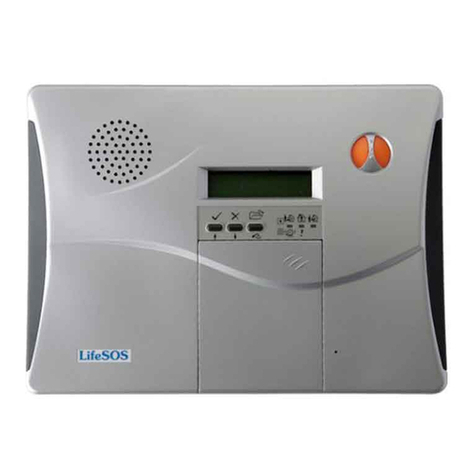
Thank you for purchasing the LS-30 IP Based Wireless Home Security & Control System.
By adopting modern microprocessor control and communication technologies, the LS-30 is designed
to provide all the most advanced features that you need to protect your home and business. Moreover,
you can operate the system and read its status by using the proprietary GUI (Graphic User Interface)
HyperSecureLink through the Internet, from all over the world*. The LS-30 is not only a security
system but also a home automation controller that allows you to set as many as 16 programmable
switches to execute daily commands throughout a whole week. With optional temperature, humidity
and other sensors, the LS-30 also operates as an environmental monitoring center to report and prevent
floods, gas leaks and other hazards.
Although the LS-30 is a very powerful device, thanks to the interactive HMI (Human Machine
Interface) programming technology, its operation is simple. Just follow the instructions shown on the
LCD display by answering the questions with YES/NO buttons or pressing the correct keys, and the
settings are done. You can also set up the system on your laptop or PC using the optional RS-232
adapter and HyperSecureLink software.
The set up is simple, switch on back up battery, connect the Base Unit to power, enroll sensors and
accessories, connect the telephone line, set the telephone numbers and record the voice messages, and
then the LS-30 is at your service.
As your security requirements grow and you become more familiar with the system, you can expand
and accessorize the LS-30 to meet your specific needs. Simply call your local dealer; trained
professionals can answer any questions you have regarding additional accessories.
Main Features:
Security and home automation.
Computer and Internet interface to download and upload system parameters and events.
Interactive programming with 16 x 2 LCD display.
Detailed 512-event log with time tag.
288 sensors /zones can be accommodated.
16 programmable X-10 switches.
Receiving RF signal strength indication and jamming detection.
Robust multi-million RF coding and special transmission timing design, avoiding interferences.
Responds to panic, burglary, fire, medical alarm and environmental hazards.
Burglar zones with supervised sensors, door and window open /close detection.
Special Monitoring mode to record all the activities in the protected area without triggering the alarm.
9 partial arm zones, working independently of the main zones, make LS-30I operate as 10 independent
systems.
Temperature, humidity and other sensors for environment monitoring.
Built-in voice dialer stores up to 10 phone numbers, 1 pager and 2 CMS data links.
Hands-free speaker-phone, two-way voice communication.
Dial-in control of listen-in, arm, disarm, event report and switch control.
Latchkey function to inform parents when kids leave or return home.
AC power loss and restore will inform the user immediately.
Inactivity monitoring to take care of the elderly or physically challenged.
Optional GSM communication module.
*For Internet connection, an optional EthernetAdapter is needed.
2




























